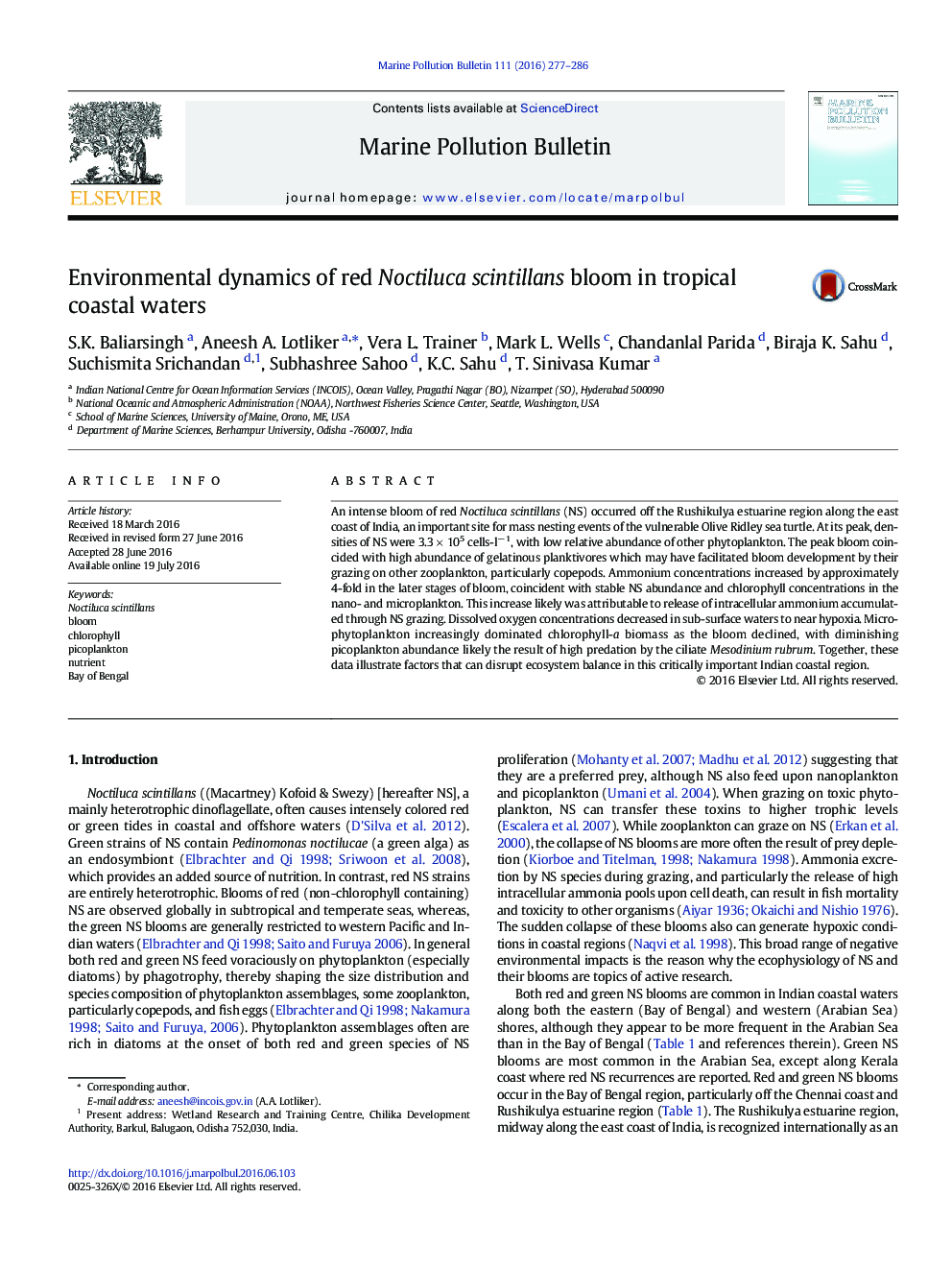| Article ID | Journal | Published Year | Pages | File Type |
|---|---|---|---|---|
| 4476314 | Marine Pollution Bulletin | 2016 | 10 Pages |
•Ammonium increased during decline bloom phase indicating active grazing•Near hypoxic sub-surface waters observed during bloom decline phase•Parallel swarming of jellyfish outcompeted noctiluca for diatom prey•Micro-phytoplankton dominated chlorophyll-a biomass as noctiluca bloom declined•Pico-phytoplankton declined due to high predation by ciliate Mesodinium rubrum
An intense bloom of red Noctiluca scintillans (NS) occurred off the Rushikulya estuarine region along the east coast of India, an important site for mass nesting events of the vulnerable Olive Ridley sea turtle. At its peak, densities of NS were 3.3 × 105 cells-l− 1, with low relative abundance of other phytoplankton. The peak bloom coincided with high abundance of gelatinous planktivores which may have facilitated bloom development by their grazing on other zooplankton, particularly copepods. Ammonium concentrations increased by approximately 4-fold in the later stages of bloom, coincident with stable NS abundance and chlorophyll concentrations in the nano- and microplankton. This increase likely was attributable to release of intracellular ammonium accumulated through NS grazing. Dissolved oxygen concentrations decreased in sub-surface waters to near hypoxia. Micro-phytoplankton increasingly dominated chlorophyll-a biomass as the bloom declined, with diminishing picoplankton abundance likely the result of high predation by the ciliate Mesodinium rubrum. Together, these data illustrate factors that can disrupt ecosystem balance in this critically important Indian coastal region.
